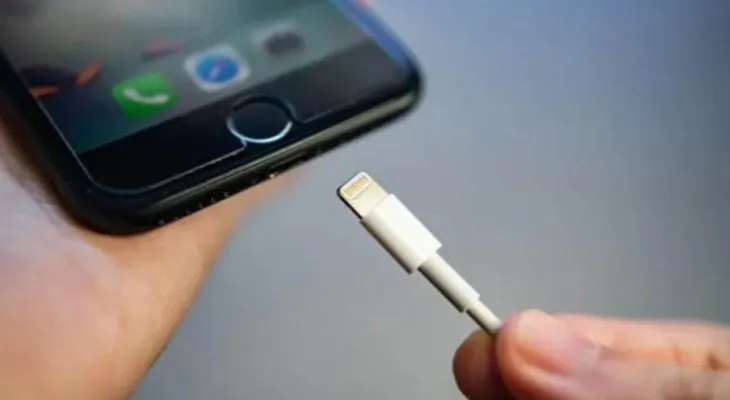Search here
Newspaper
Search here

Arab Canada News
News

Published: April 20, 2022
A technical expert revealed 3 signs that indicate your "iPhone" cable could kill you.. Learn about them.
According to the British newspaper "The Sun," Giuseppe Capanna from the Electrical Safety Association urged iPhone users to stay vigilant about "dodgy" charging cables, warning that cheaply sold charging cables could pose a risk of fire or serious electric shock.
In his interview with the newspaper, he shared some signs that indicate your device could be a death trap.
Capanna said: "Fake iPhone chargers are deliberately designed to look identical or similar to the original product with the aim of deceiving consumers. Often, counterfeit products consist of poor-quality components, putting the buyer at risk."
He added: "They pose a particularly insidious threat to the consumer, undermine legitimate manufacturers and retailers, while often posing a risk of fire, serious electric shock, or even electric electrocution."
Fake iPhone cables are divided into two categories: counterfeit and uncertified.
Counterfeit
The counterfeit product is a cheap product forged to look like it was made by Apple.
Uncertified
As for uncertified, it is made by third-party companies without the approval of the iPhone manufacturer.
In general, if you buy a cheap cable from a reputable retailer certified by Apple, the product is safe.
On the other hand, counterfeit and uncertified cables can be dangerous, and they have been blamed on numerous occasions for serious explosions, fatal electric shocks, and house fires.
According to an investigation previously conducted by the ESF Foundation, up to 98% of fake Apple cables put consumers at risk.
If you buy a charger from a discount store or an online marketplace and aren’t sure if it’s fake, there are a number of clear signs to look for.
1. Check the packaging and cable
Since Apple charges up to £29 for a charging cable on its website, it’s understandable that some consumers look to buy elsewhere.
If you buy a charging cable from an external vendor, make sure it is certified by Apple by carefully inspecting the accessory packaging.
Apple-certified third-party accessories feature the MFi badge on their packaging, which indicates the phrase "Made for iPod, iPhone, iPad."
Additionally, look for missing marks or spelling errors in the text on the cable, Capanna said.
He continued: "This is the easiest way to spot counterfeit products, but beware, counterfeit products have become more sophisticated."
2. Look at the plug
It’s best to compare your charger with another Apple charger. Counterfeit accessories tend to be thinner and lighter in hand.
As a result, you can test the plug pins for signs of a fake product.
Capanna said: "Tests we conducted showed that the pins on fake plugs are much weaker than legally required standards. This is usually because they are hollow plastic covered with metal, rather than solid metal used in original products. An easy check is simply tapping the largest pin and listening to the noise it makes. Original components sound solid, while counterfeit products will make plastic noises and feel hollow."
Additionally, the finishes on the plug housing can indicate fake.
Capanna explained that "the finish of the original charger is high quality, matte, and uniform. On fake chargers, the finish is usually shiny or glossy with defects."
3. Weight, shape, and dimensions
It’s worth taking a look at the weight of the item and plug pins.
The phone product is lighter than the original Apple product, and the pins may be the wrong size or shape.
Capanna said: "Since fake chargers contain few, if any, of the high-quality components required for safety, they are usually much lighter than original chargers. The charger should weigh about 40 grams."
He added: "Plug pins in a fake iPhone charger may be larger or smaller than the original charger and can be placed differently. The easiest way to check is by first using an electrical safety component tester."
Comments